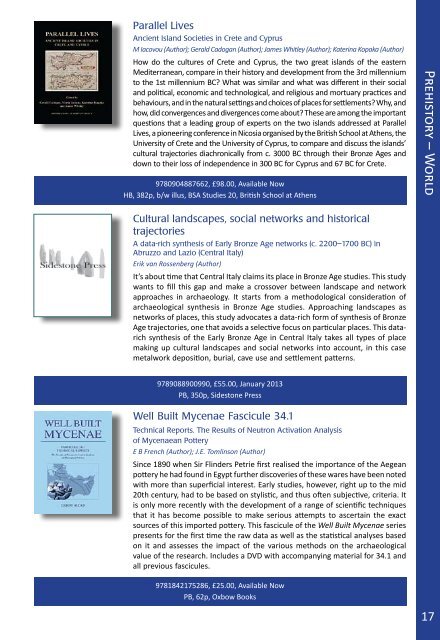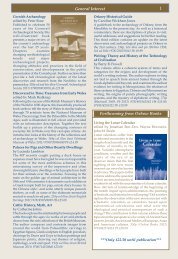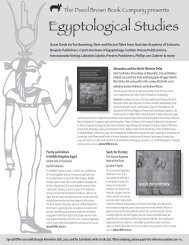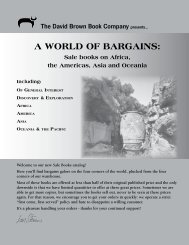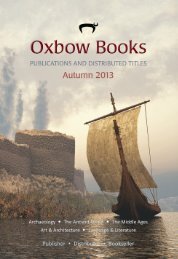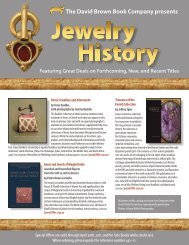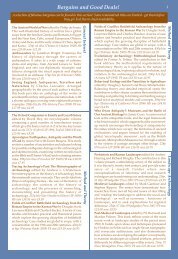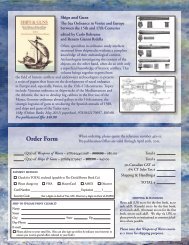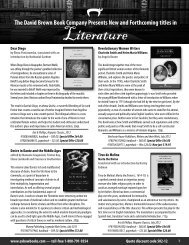Oxbow Spring 2013.pdf - Oxbow Books
Oxbow Spring 2013.pdf - Oxbow Books
Oxbow Spring 2013.pdf - Oxbow Books
Create successful ePaper yourself
Turn your PDF publications into a flip-book with our unique Google optimized e-Paper software.
Parallel Lives<br />
Ancient Island Societies in Crete and Cyprus<br />
M Iacovou (Author); Gerald Cadogan (Author); James Whitley (Author); Katerina Kopaka (Author)<br />
How do the cultures of Crete and Cyprus, the two great islands of the eastern<br />
Mediterranean, compare in their history and development from the 3rd millennium<br />
to the 1st millennium BC? What was similar and what was different in their social<br />
and political, economic and technological, and religious and mortuary practices and<br />
behaviours, and in the natural settings and choices of places for settlements? Why, and<br />
how, did convergences and divergences come about? These are among the important<br />
questions that a leading group of experts on the two islands addressed at Parallel<br />
Lives, a pioneering conference in Nicosia organised by the British School at Athens, the<br />
University of Crete and the University of Cyprus, to compare and discuss the islands’<br />
cultural trajectories diachronically from c. 3000 BC through their Bronze Ages and<br />
down to their loss of independence in 300 BC for Cyprus and 67 BC for Crete.<br />
9780904887662, £98.00, Available Now<br />
HB, 382p, b/w illus, BSA Studies 20, British School at Athens<br />
Prehistory – World<br />
Cultural landscapes, social networks and historical<br />
trajectories<br />
A data-rich synthesis of Early Bronze Age networks (c. 2200–1700 BC) in<br />
Abruzzo and Lazio (Central Italy)<br />
Erik van Rossenberg (Author)<br />
It’s about time that Central Italy claims its place in Bronze Age studies. This study<br />
wants to fill this gap and make a crossover between landscape and network<br />
approaches in archaeology. It starts from a methodological consideration of<br />
archaeological synthesis in Bronze Age studies. Approaching landscapes as<br />
networks of places, this study advocates a data-rich form of synthesis of Bronze<br />
Age trajectories, one that avoids a selective focus on particular places. This datarich<br />
synthesis of the Early Bronze Age in Central Italy takes all types of place<br />
making up cultural landscapes and social networks into account, in this case<br />
metalwork deposition, burial, cave use and settlement patterns.<br />
9789088900990, £55.00, January 2013<br />
PB, 350p, Sidestone Press<br />
Well Built Mycenae Fascicule 34.1<br />
Technical Reports. The Results of Neutron Activation Analysis<br />
of Mycenaean Pottery<br />
E B French (Author); J.E. Tomlinson (Author)<br />
Since 1890 when Sir Flinders Petrie first realised the importance of the Aegean<br />
pottery he had found in Egypt further discoveries of these wares have been noted<br />
with more than superficial interest. Early studies, however, right up to the mid<br />
20th century, had to be based on stylistic, and thus often subjective, criteria. It<br />
is only more recently with the development of a range of scientific techniques<br />
that it has become possible to make serious attempts to ascertain the exact<br />
sources of this imported pottery. This fascicule of the Well Built Mycenae series<br />
presents for the first time the raw data as well as the statistical analyses based<br />
on it and assesses the impact of the various methods on the archaeological<br />
value of the research. Includes a DVD with accompanying material for 34.1 and<br />
all previous fascicules.<br />
9781842175286, £25.00, Available Now<br />
PB, 62p, <strong>Oxbow</strong> <strong>Books</strong><br />
17


